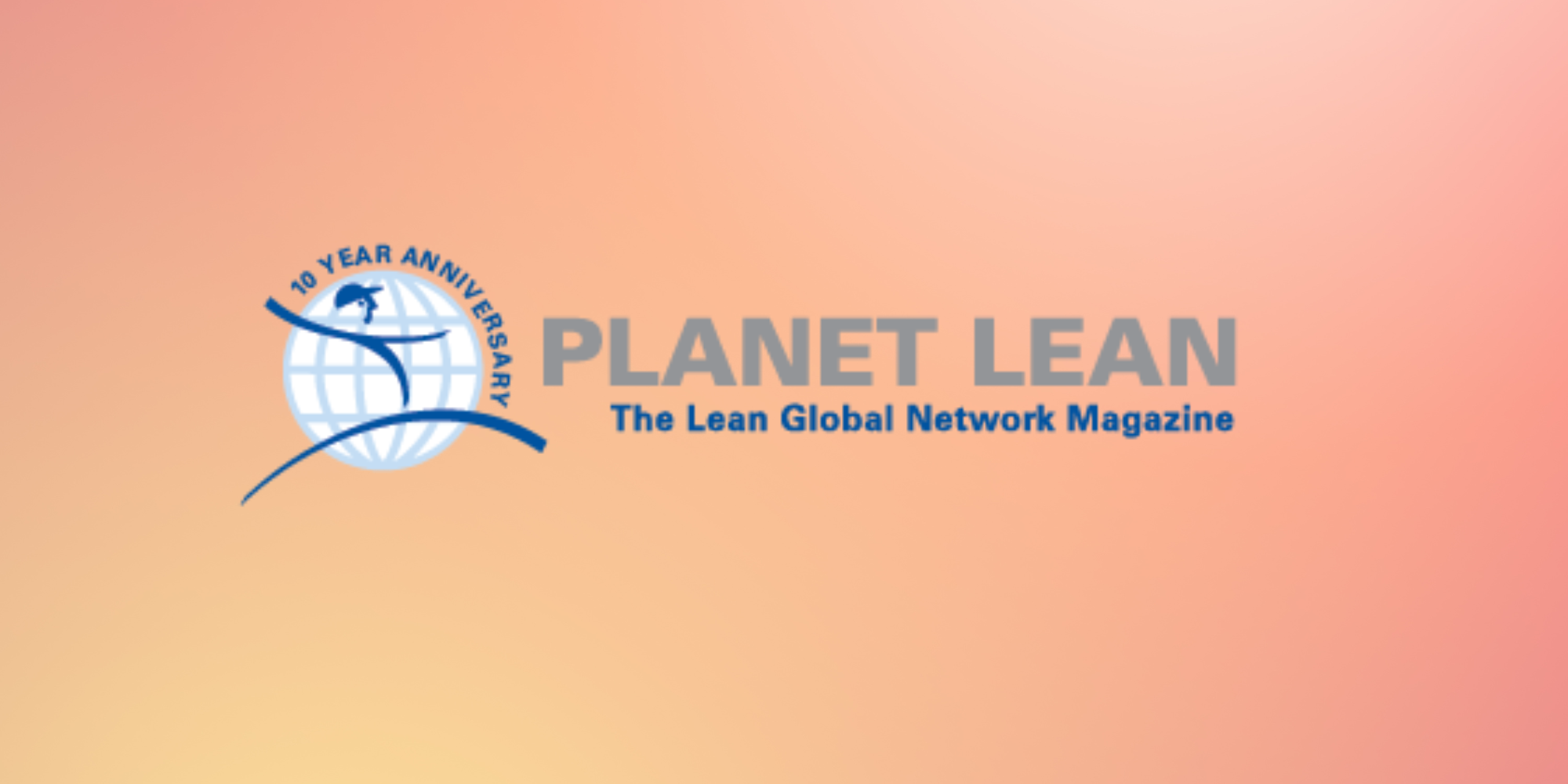
Awakening
INTERVIEW – The extraordinary events of the past year have encouraged lean organizations around the world to ask deeper questions about purpose and value creation, says Josh Howell.
Interviewee: Josh Howell, President, Lean Enterprise Institute
Roberto Priolo: What are your reflections on how lean organizations have been reacting to the historical events that have been unfolding this past year?
Josh Howell: One interesting trend I have seen is a shift from seeing Lean Thinking as mere process improvement to leveraging it to ask more fundamental questions around purpose. This transition perhaps preceded the pandemic for some (I think it’s fair to assume, for example, that digital organizations have a few years’ advantage when it comes to pivoting and adapting to changing customer needs), but there is no doubt that Covid-19 has suddenly put it into focus for most of us.
Over the past year, customer needs have changed dramatically, forcing organizations to rethink their whole value proposition. Let’s look at restaurants as an example. With so much of their work now focusing on deliveries and take-out, they found themselves having to reevaluate their purpose and find better ways to provide value to customers at a time when eating at home has become the norm.
As difficult as this transition is, I also think it is very exciting. Lean Thinking has often gotten a bad rap for what some see as a maniacal focus on process at the expense of purpose. Deservedly so. We are all guilty of this to an extent, which is why it’s critical that the shift that is currently taking place stays with us post-pandemic.
RP: How can lean practically help with this shift towards purpose?
JH: One way that immediately comes to mind is the common idea of “Customer First”. Value as defined by the customer is the first principle of lean, after all. As difficult as it would be to find someone – whether or not they are lean thinkers – who disagrees with this idea, Lean Thinking provides various ways to turn it into a reality.
Takt time, for example, takes a rather ambiguous concept like “voice of the customer” and translates it into something very practical and concrete like the rhythm of an operation, thus giving the process improvement work a clear aim. Concepts and practices like value stream thinking or even lean product and process development (LPPD) also seem to challenge us to think more deeply about what our customers need and how we’ll meet those needs, our work, and to define our value proposition in a useful way.
The experimentation mindset that comes with PDCA is in itself of great help when it comes to understanding what customers want. It’s perfectly acceptable to not know everything our customers need at a certain moment in time. Lean, through PDCA, gives us a way to try things out and iterate to deepen our understanding of what customers value, closing our knowledge gaps along the way.
Another opportunity to better define our value proposition comes from thinking about the customer-facing work of front-line employees in terms of “fixed and flexible”. In her book Steady Work, Karen Gaudet talks about “repeatable routines” at Starbucks, which I remember well from my years with the company. The creation of the routines stemmed from the recognition that the work of a barista entails both the preparation of drinks and the interaction with the customer. Striking a friendly conversation with a customer is hugely beneficial, but often challenging – especially when one has to worry about doing her job well. Standardizing the fixed elements of the work, like the preparation of a latte, to make them so easy they can almost be performed mindlessly will ensure an employee has the energy and mental capacity to focus on the flexible and creative elements. It’s clear to me that this applies to any context: let’s stabilize and standardize the repetitive work so we can focus on what truly creates value, spending our limited capacity and energy on this more important, and more meaningful, work.
RP: Do you think there is a way for the Lean Community to contribute more to solving societal issues?
JH: I think there are a couple ways in which Lean Thinking can generate societal benefits. First of all, there is still a lot that can be done by improving the jobs that people have, removing waste and ensuring that the work uplifts individuals and helps them to reach their full potential. We need to continually reinforce that it’s not all about stakeholder value and that it is critical to create good, steady jobs with good work so that people can be positive contributors to society outside of work. Businesses can help their employees be less exhausted after a workday by reducing wasteful activity and, in turn, help them conserve some energy for their families and friends. Moreover, by developing their employees, businesses can help fill society with more effective problem solvers. After all, society has no shortage of problems that need to be solved.
The other way in which lean can help tackle systemic issues is by facilitating conversations with other communities that are also trying to solve such problems. For example, I recently had the opportunity to chat with Valeria Sinclair-Chapman, the Director of Research on Diversity and Inclusion at Purdue University. (Her partner, Christopher Chapman, recently wrote a lean post on how Lean Thinking can contribute to the resolution of a problem as gnarly as systemic racism.) She is frustrated by the approach that many in her field are taking, which she sees as overly reliant on training – we know something about that in the lean world, too – and she is interested in understanding what lean might contribute to this all-important discussion about how to transform systems. She sees the lean movement as an evolutionary movement that has been learning over time how to effect systemic change. Indeed, great conversations take place when lean thinkers exchange ideas with people trying to bring positive change in areas that are extremely problematic. There is much we can learn from one another and, together, we can try to create systemic change.
RP: By doing the things you just described, do you think we might be even able to tackle the issue of relevance that lean seems to be struggling with?
JH: Yes, absolutely. This is a great way to demonstrate the relevance of lean, as is making permanent the shift I talked about earlier from mere process improvement to running businesses on purpose. We have to ensure Lean Thinking comes to be recognized as a way to both improve operations and redefine value in an ongoing way. This might attract people outside our community more than talking only about cost reduction, efficiency or process improvement (which isn’t to say that these are not important things).
RP: What is the biggest lesson you have learned over the past year?
JH: At the highest level, a lot of what we have talked about in this interview reflects my inner dialogue over the past year. The same shift I see happening in the community is something I am recognizing in myself and in our team at the Lean Enterprise Institute. We are engaging in more and more conversations around “value improvement”. To continue to be of use, we need to constantly search for new ways of engaging our community.
I think the pandemic has made us all less complacent and forced us to ask very difficult questions about what we are doing and why we are doing it. Some people were already on that journey of discovery, but for many of us there has been a bit of an awakening to the importance of developing that “purpose muscle”. It’s very important that we don’t return to our slumber when things eventually go back to normal. That way, we will be able to elevate our contribution and relevance as a community and expand our focus by looking at things we were perhaps not paying enough attention to – whether it’s the purpose of a business or an innovative way to address a societal problem. Now that we have been reminded of the importance of focusing on what truly matters, we should never forget that developing capabilities and improving processes is an enabler, not an end in itself.
THE INTERVIEWEE

Read more


FEATURE – Is your organization experiencing any of the strategic planning problems described in this article? If so, it might be time to tap into the potential of hoshin kanri.


CASE STUDY – This Chilean agrobusiness company achieved great results in a very short time by applying lean to standardize its processes and improve its productivity. They are now berry fond of the methodology.


FEATURE – Ten years ago, Planet Lean was launched as a new platform for the Lean Community to share its experiences and knowledge. Our editor reflects on the magazine's mission, history and contribution of the spread of Lean Thinking.


FEATURE – In this new series, the author taps into LEI Hungary’s experience with lean transformations to highlight the most common mistakes people make when approaching the A3 framework.

